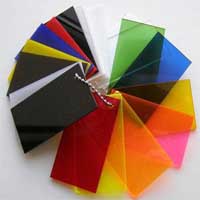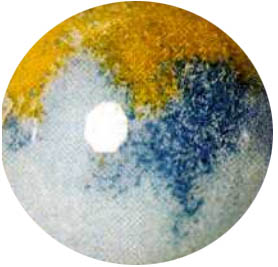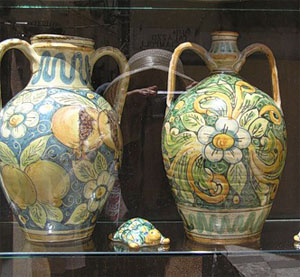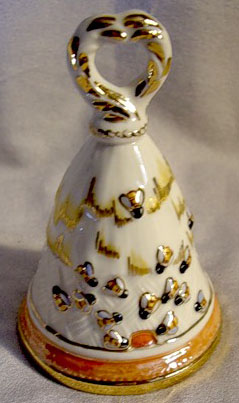Organic glass

Since very ancient time people know glass as a transparent, solid and heat-resistant material. But as everybody knows, it is a fragile material. In the XX century with the development of polymer chemistry managed to get glass - plastic, with some properties similar to the fragile inorganic glass. It was polymethyl methacrylate (PMMA). Polymethyl methacrylate is a high molecular weight substance what can be got in the result of the polymerization of monomer (methyl methacrylate).
Molecules of organic glass are high compared to inorganic substances. It is typical for many organic substances. In PMMA the carbon atom connected with 2 substituents - the methyl and the polar ester groups.
The rigidity of organic glass (or plastic) is large, so it can be processed and cut on the machines. Such rigidity is due to the forces of attraction between molecules of the polymer.

Polymethyl methacrylate (PMMA or organic glass) is a transparent colorless polymer. At a temperature of more than 110 0C, softening, goes into a viscous fluid state. That is why such plastic may be easily used for the manufacture of various products (of course, casting should be done with pressure). Organic glass is the most heat-resistant polymer. At temperatures above 300 0C it starts to decompose.
The name organic glass (or plexiglass) refers to thin transparent sheets made from PMMA. Organic glass can be successfully manufactured from other polymers, such as polystyrene, polycarbonate, etc. High strength of this material is the most important of his dignity. The strength of the glass is much greater than the strength of an ordinary (silicate) glass: it's almost not afraid of bumps! Additionally, organic glass blocks ultraviolet (unlike usual glass), therefore, organic glass is used for glazing greenhouses. But of course, there are drawbacks. The hardness of the glass is much lower than usual (silicate glass), organic glass is easily cut and scratched. In addition, it is less chemically resistant.
Organic glass has been proven in industry and everyday life, due to its unique properties. In some cases, it is applied exclusively to organic glass. It is widely used in measuring instruments, aircraft, technology and clockworks. Based on organic glass made lamps, traffic signs and advertising.
Ceramics

Ceramics - the first artificial material made by people. Basic composition of ceramics is a clay having a composition Al2O3*2SiO2*2H2O. In addition, the clay contains impurities - CaCO3 - chalk, MgCO3, iron oxide Fe2O3, giving the pottery brown color. Kaolin (the mineral composition of Al2O3*2SiO2*2H2O), forms crystals in a scaly shape, tightly adjacent to each other, the clay soil is almost does not absorb and pass water. As you know, the clay becomes pliable with the presence of moisture. Baked clay vessels are made 8 thousand years ago, discovered by archaeologists in Siberia.
To wet the clay became more pliable, the ancient masters would add to it liquid manure. And adding to the clay slaked lime - Ca(OH)2) helps to burn ceramics faster.
Making pottery.
The burn kaolin the water is pulled first, and then at higher temperatures, disrupted silicon oxide SiO2
Al2O3*2SiO2*2H2O →Al2O3*2SiO2 + 2H2O
3(Al2O3*2SiO2) →3 Al2O3*2SiO2 + 2H2O
Contained carbonates CaCO3 and MgCO3 decompose releasing oxides CaO and MgO and carbon dioxide. These oxides form with silicon dioxide fusible silicates.
CaO+SiO2 →CaSiO3
MgO+SiO2 →MgSiO3, are impregnat the product and form needle-shaped crystals, linking the scales of clay.
Pottery are usually got porous and pass the water. So they are covered with glaze - fusible composition, giving the surface a thin waterproof film.
Porcelain

Porcelain get with strong annealing of the mass formed with mixing white kaolin Al2O3*2SiO2*2H2O ("porcelain clay") with other minerals, contained silicon, and water. In the kiln, kaolin releases water and is decomposed to oxides of aluminium and silicon, that are fused with other parts of the porcelain mass. In this case the product was reduced in volume, porcelain becomes thick and ringing.
Faience
Faience appeared early of porcelain. Homeland faience is Egypt. The greatest flowering of the production of faience products reached in the XVI century in the Italian in Faenza town (hence the name "Faience"). Production technology of faience, do not only ware, but also all kinds of chemical equipment, sanitary products, basically the same as porcelain, but instead of kaolin there are used the special "porcelain" - white clay, more plastic and fusible.